The best winter-hardy varieties of climbing roses that bloom all summer
Summer cannot be imagined without lush and fragrant flowers. Among all types of plants, gardeners always highlight the rose - the queen of the garden. White, pink, lilac, yellow - there are so many varieties. Gardeners especially appreciate varieties of winter-hardy climbing and long-blooming roses: they are easy to grow and bloom from spring to autumn.
The best winter-hardy varieties of climbing roses that bloom all summer
Garden roses are a decoration for any garden, especially if the delicate and colorful flower pleases the eye all summer long and does not cause any trouble. in care.
Gardeners recommend planting the following long-flowering varieties.
Santana
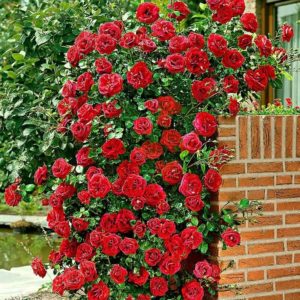
The climbing rose Santana is resistant to frost and rain. The flowers are semi-double and look beautiful at any stage of bloom.
One brush contains 3–7 buds of rich blood red color. The height of the stem is 2 m, the diameter of the flower is about 10 cm.
Santana has no aroma, the leaves are medium and green. The rose is valued for its resistance to powdery mildew and black spot.
Frost resistance - down to -29°C. The variety is unpretentious in care and grows well both with and without support.
Golden Showers
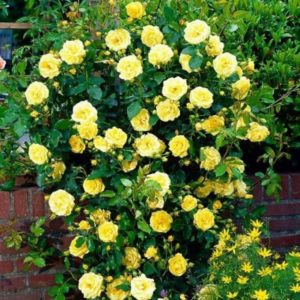
A variety of graceful climbing roses, Golden Showers, blooms profusely in sunny areas and in partial shade, and tolerates short-term absence of sun.
It belongs to the American hybrids, but quickly took root in Russia. Shoot height - up to 3 m; leaves are glossy, dark green. The color is soft yellow, the diameter of the flower is about 10 cm, the aroma is weak, floral.
Flowers appear singly or in small inflorescences of 3–5 pieces. The plant can be given the appearance of a bush to make it look more well-groomed and neat.
Flowering begins in mid-July and continues until early autumn.
Sympathy
The height of the shoots is from 3 m to 4.5 m, the color of the rose is bright red. The flowers are large, diameter 10–12 cm. The variety is planted near gazebos, fences, and country houses.
The aroma of flowers is of medium intensity, pleasant. Lush dark green leaves together with red roses create an original combination. Sympathy blooms until October, maintaining a rich color and pleasant smell throughout all months. Winter hardiness - down to -31°C, the bush blooms profusely in any soil.
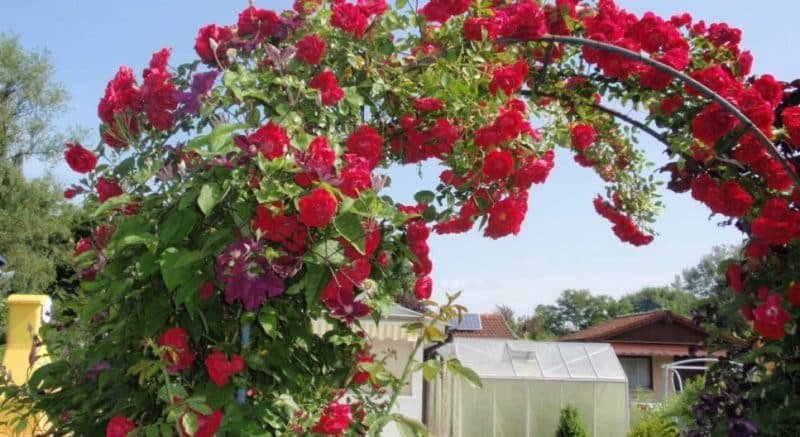
Rosarium Jutersen
The bushes are spreading, up to 3 m high, the shoots are thick, the leaves are dark green, the thorns are thin. Rosarium Yutersen is most often grown in standard form. The frost-resistant bush is unpretentious in care, flowering lasts from mid-summer to autumn.
The shades of the flowers range from dark to silver pink, the shape is flat, the diameter is about 11 cm. The roses are collected in inflorescences of 3–5 pieces, the aroma is light and unobtrusive.
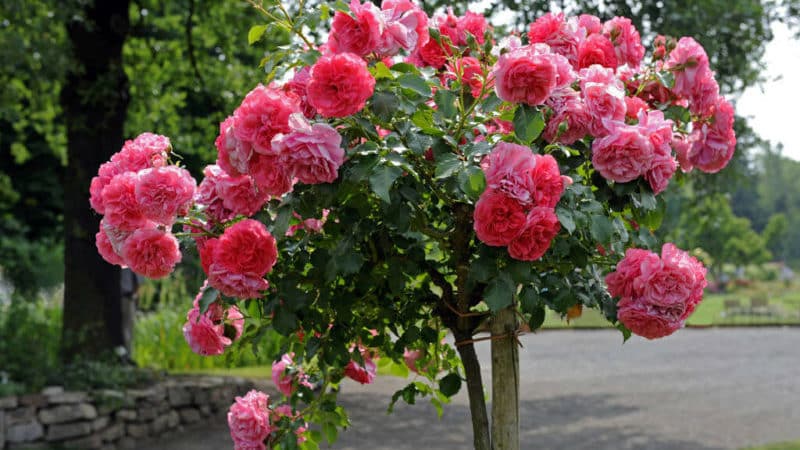
Golden Gate
Plant height - up to 4.5 m, shoots of medium thickness, flowers with thorns. The roses are golden yellow, velvety, about 10 cm in diameter. Flowering is long-lasting, disease resistance is average.
The bush is lush, with glossy green leaves. Golden Gate is also appreciated for its delicate fruity aroma. Frost resistance is down to -25°C, so the plant is covered for the winter.
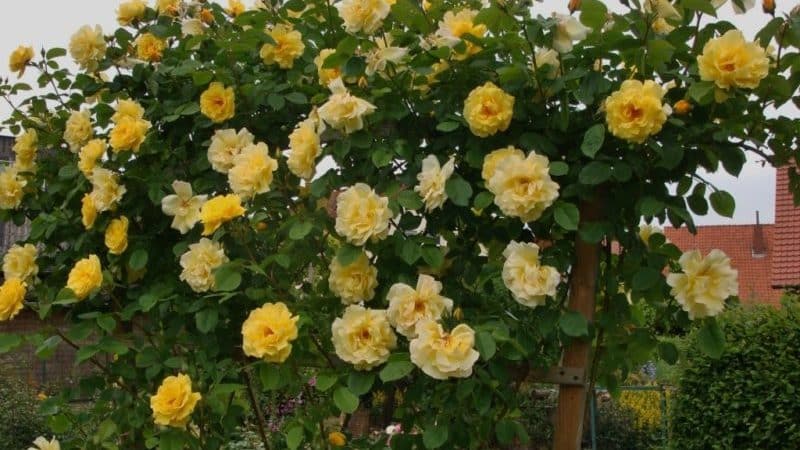
Polka
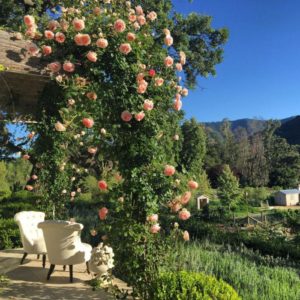
Climbing variety of French selection.
Height - about 2 m, flower diameter - 10–12 cm, leaves of medium size.
The color of the roses is very beautiful - coral or soft peach.
Polka blooms up to 3 times per season and is resistant to sudden weather changes. The scent of the flowers is light and pleasant.
With proper care, the plant rarely gets sick; flowering ends in September.
Types of similar varieties
Conventionally, climbing frost-resistant varieties of roses are divided into small-flowered, large-flowered and semi-climbing.
Small-flowered
Among the small-flowered varieties, Flamentanz is distinguished. The diameter of the flower is 6-7 cm, the color is rich red, the aroma is strong. The leaves are dense, thick, bright green.
The plant is vigorous, up to 2.5–3 m high. Winter hardiness is down to -33°C, so roses are planted even in the coldest regions. The variety is used for vertical gardening or as part of flower beds. Immunity to diseases and insect pests high.
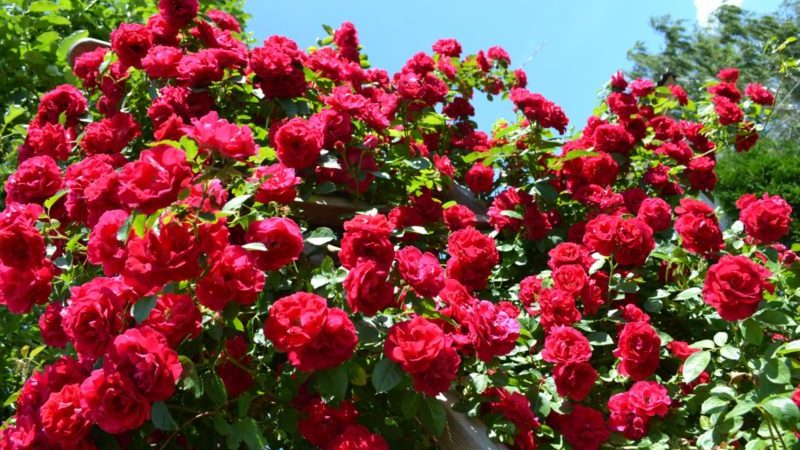
The small-flowered, long-flowering variety Super Excelsa also stands out. The flowers are double, with a hint of rich fuchsia, diameter - 4-5 cm. The shoots are numerous, the bushes are moderately strong, the flowering is abundant. The brushes are large and lush. The variety tolerates sultry heat and long frosts well.
Super Excelsa looks beautiful as a stand-alone flower or together with other climbing varieties.
Large-flowered
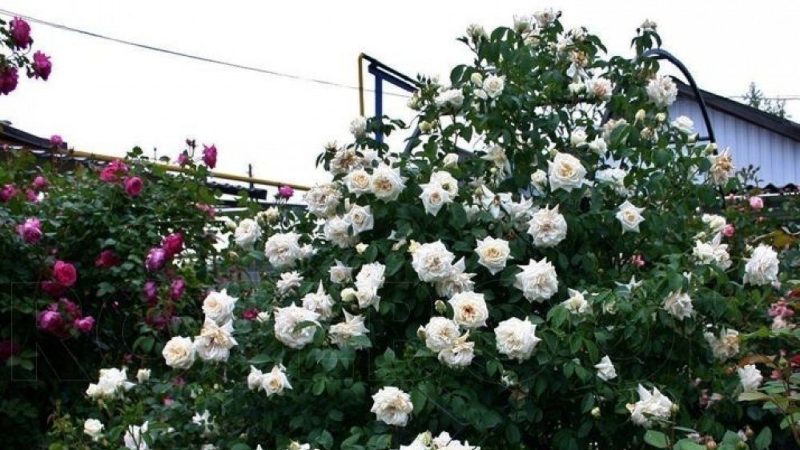
Rose variety Ilse Kron Superior It is distinguished by very large flowers, the diameter of which reaches 15 cm. The color is pearly white, the height of the bush is about 2.3 m, frost resistance is down to -29°C. The stems are short but strong.
The flowers look delicate and graceful, with a milky tint. The shape of the bushes is lush and spreading. The plant has high resistance to diseases and insects, and it is not afraid of heavy rains.
Isolate a variety Meilandina Orange. The rose of French selection is not demanding on growing conditions and quickly takes root on the site. The height of the bush is up to 2 m, the shape is semi-spreading.
The diameter of the flower is 9-11 mm, the color is orange-pink.The aroma is pleasant, floral-fruity, unobtrusive. Meylandina Orange is used for landscaping terraces, growing in flower beds or flower beds.
Semi-climbing
Semi-climbing roses are not inferior in beauty to climbing ones, but are more unpretentious to grow. Flower growers highlight the German variety Angelica.
The bushes are compact, up to 1.2 m high. The flowers are cup-shaped, pink in color, grow in inflorescences, the diameter of one is about 4 cm. Angelica blooms from May, and is resistant to diseases and weather changes. Thanks to its compact size, it takes root well in small areas.
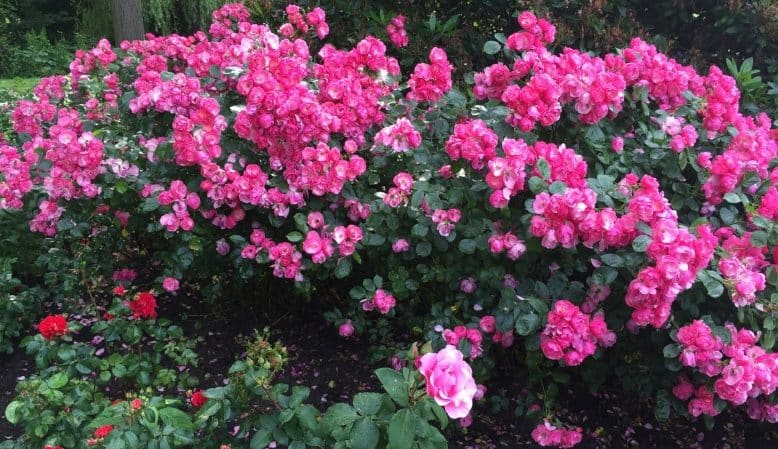
Another German variety of semi-climbing rose is Lydia. The height of the plant is up to 2 m, the flowers are red-orange, 6-7 cm in diameter, fragrant and aromatic, collected in inflorescences. Flowering begins in May and continues until autumn. The bushes do not require special care and rarely get sick.
Features of growing winter-hardy climbing, continuously blooming roses
All roses love a lot of light, but if they are in the sun all day, they quickly fade. Therefore, experienced gardeners recommend choosing shade or partial shade for planting. The best option is when the flower is in the sun before lunch, and then in the shade.
Attention! Frost-resistant and long-blooming roses prefer fertile and light soil. If you plant them in heavy clay and poor soil, the root system will rot. The soil reaction for growing crops should be slightly acidic, about 6 pH.
Roses should not be planted in low-lying areas or near groundwater. Due to such conditions, plants often get sick, which negatively affects the beauty and lushness of flowers.
The nuances of growing in different regions
In the middle zone and northern regions, climbing roses are planted in March - April, after the snow melts.At first, pay attention to watering: make sure that the soil is slightly moist. Water the plant early in the morning. By the end of summer, moisturizing is stopped, as the bush is preparing for cold weather.
Important! In the southern regions, flowers should not be in bright sun for more than 4-5 hours a day. It is recommended to regularly spray them with a spray bottle and, if necessary, erect simple structures to protect them from the scorching sun. It is not necessary to cover plants for the winter. During the summer it is important fertilize flowers and regularly loosen the soil, otherwise the rose will not bloom.
In the middle zone, bushes are covered for the winter, preferably with spruce branches. Before this, pruning and hilling are carried out so that the root system does not freeze. It is noteworthy that in Siberia and the Urals, flowers winter without problems due to the abundant snow cover.
Tips for choosing a variety and growing it
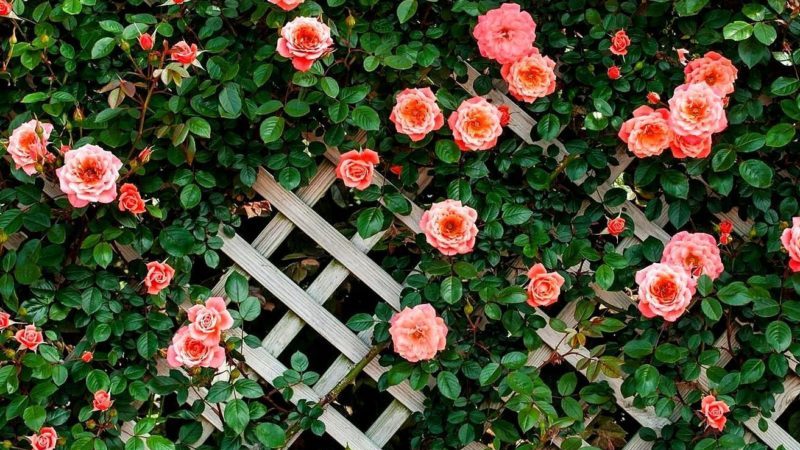
In order for climbing and climbing roses to delight you with lush flowering all season long, it is recommended to follow simple growing tips:
- Pay attention to the frost resistance of the variety. If the rose can withstand temperatures down to -30°C, it is suitable for growing in the middle zone or in the north. In Moscow, the Moscow region and the southern regions, varieties that can withstand temperatures down to -23°C are planted.
- Before purchasing, study photos of flowers and reviews about them. Pay attention to the characteristics, name of the variety, country of selection.
- Prepare the soil in the rose garden in advance: dig it up, clear it of debris and weeds, and fertilize it.
- Propagate climbing rose cuttings. Harvest them from young and strong bushes after the first wave of flowering.
Thornless varieties cause the least trouble. They are easy to care for pruning does not cause problems.
Conclusion
Polka, Sympathy, Santana are popular varieties of climbing roses.They bloom all summer and are suitable for landscaping, decorating flower beds and flower beds. The plants are winter-hardy, so they take root in the middle zone without any problems. They like warm, slightly acidic soil and an area in partial shade.
Care consists of watering and pruning, hilling and fertilizers. With proper care, roses will be lush and fragrant.
If I were sure that you would send exactly the advertised varieties of climbing roses, I would gladly order!